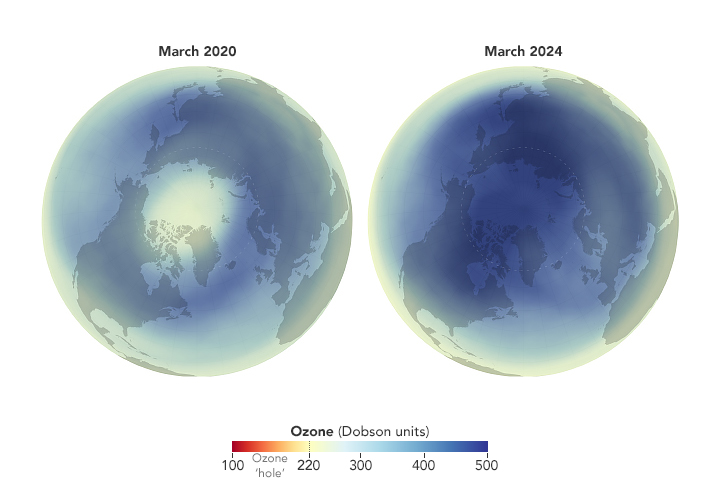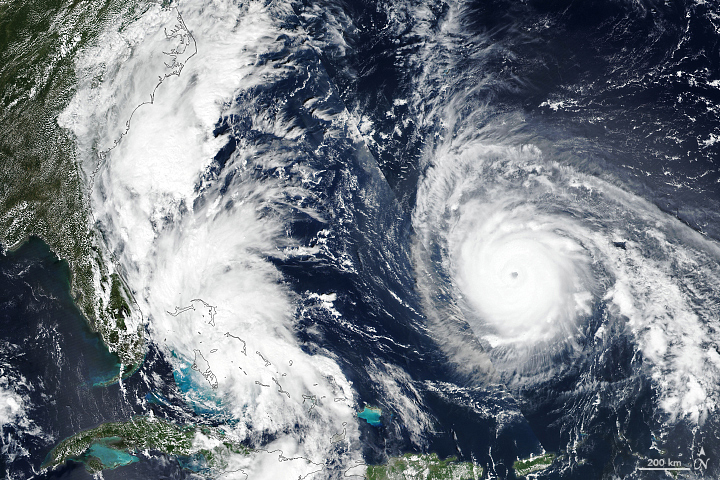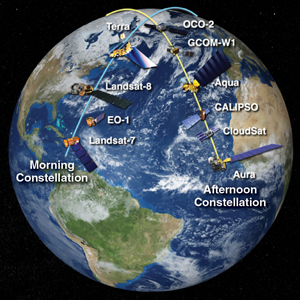



Recent Imagery
You will be directed to the NASA Visible Earth webpage when you select Images by Mission below, or click on the images at right that are randomly generated to represent four out of all possible topics.
Orchestrating NASA’s Fleet of Earth Observing Satellites
NASA’s current satellite fleet includes 20 Earth-observing missions. While each satellite performs independent mission work, some augment their science capabilities by flying in close, coordinated proximity to one another as part of a constellation—e.g., the Afternoon Constellation, or “A-Train.” Maintaining the orbits of each of these missions and keeping them all safely operating presents daily challenges. On page 4 of the March-April issue of The Earth Observer, we provide an overview of NASA’s Earth Science Mission Operations (ESMO) Project.

